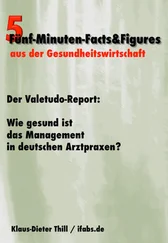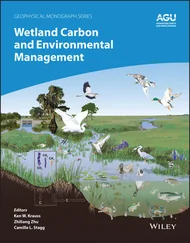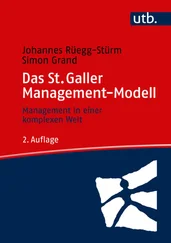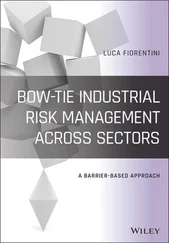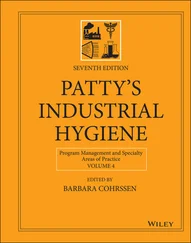5 Chapter 6Table 6.1 Commonly used life cycle impact categories.Table 6.2 Examples of checklist categories and potential inconsistencies.Table 6.3 LCA and LCI software tools.Table 6.4 Make‐up chemical, and energy, water, and land use per 1000 T oven d...Table 6.5 Summary of specific energy consumption in current pulp and papermak...Table 6.6 Effluent loads from the manufacture of forest products.Table 6.7 Emissions from chemical‐, mechanical‐, and bio‐pulping and papermak...Table 6.8 Environmental and human health impacts characterization results in ...Table 6.9 Select summary of acute and chronic toxic effects of residual chlor...Table 6.10 Summary of results of brief exposures of fish to residual chlorine...Table 6.11 Major parameters affecting the UV disinfection of wastewater.Table 6.12 Cost of generating power, and air quality and environmental impact...Table 6.13 Total system energy consumption.Table 6.14 Non‐feedstock energy consumption.Table 6.15 Technologies and their approximate control efficiencies.Table 6.16 NO xcontrol technologies and effective emission levels.Table 6.17 NO xemissions, control effectiveness, economics, and environmental...Table 6.18 CO emissions, control effectiveness, economics, and environmental ...Table 6.19 Ranking of feasible control technologies by effectiveness.
6 Chapter 7Table 7.1 Progress towards SGP goals.Table 7.2 Pollution prevention technologies for surface finishers.Table 7.3 Potential cost savings.Table 7.4 Annualized income, costs, and earnings 2000 ADTPD mill, 14 lb metha...Table 7.5 Effluent discharges from pulp and paper mills.Table 7.6 Operating cost breakdown for a 265 gpm system resulting in a cost o...Table 7.7 Pollutant abatement expenditures by US manufacturing industries.Table 7.8 Summary of environmental costs at the Amoco Yorktown Refinery.Table 7.9 Summary of environmental costs at the DuPont LaPorte Chemical Manuf...Table 7.10 TAC and cost per ton of PM removals VS flow rate and boiler steam ...Table 7.11 Cost indices as annual averages.Table 7.12 Cost exponents for air pollution control equipment.Table 7.13 Availability and cost of potential feedstocks.
7 Chapter 8Table 8.1 Constants for the  and
and  .Table 8.2 Four levels of integration in the design to fabrication cycle.Table 8.3 Factors in design for life cycle.Table 8.4 Comparing the two methodologies: Six Sigma and Lean Manufacturing.Table 8.5 Dramatic improvement in the cost of quality as a percentage of sale...
.Table 8.2 Four levels of integration in the design to fabrication cycle.Table 8.3 Factors in design for life cycle.Table 8.4 Comparing the two methodologies: Six Sigma and Lean Manufacturing.Table 8.5 Dramatic improvement in the cost of quality as a percentage of sale...
8 Chapter 9Table 9.1 Return on investment calculations: electron beam–ammonia SO 2and NOTable 9.2 Comparison of the water withdrawal and water consumption factors (i...Table 9.3 Typical performance of advanced multi‐pollutant removal.Table 9.4 Properties of black liquor.Table 9.5 Black liquor gasification processes.Table 9.6 Difference between LTBLG and HTBLG.Table 9.7 Annual production of selected fuels.Table 9.8 Qualitative indication of relative environmental impact of differen...Table 9.9 Biorefinery estimates based on BLG studies, e.g. BLGCC and BLG for ...
9 Appendix A Table A.1 Conversion factors.
10 Appendix C Table C.1 Compilation of air pollutant emission factors: stationary point and ar...Table C.2 List of hazardous air pollutants.Table C.3 Values of the ideal gas law constant R [ R = ( PV / nT )].Table C.4 Selected properties of air.
11 Appendix E Table E.1 Highlight and brief explanation about industrial hygiene types and tec...
12 Appendix GTable G.1 Waste composition: detailed results.
13 Appendix HTable H.1 Factors for constructing variables control charts.Table H.2 Process sigma conversion table.
1 Chapter 1 Figure 1.1 Pollution prevention hierarchy. Figure 1.2 “Zero” waste manufacturing facility. Figure 1.3 Zero discharge (emissions) is a subset of industrial ecology (see S... Figure 1.4 Zero discharge is supported by an array of tools and methodologies. Figure 1.5 The interrelationship of sources, systems, and sinks for a linear (... Figure 1.6 The interrelationship of sources, systems, and sinks for a cyclic (... Figure 1.7 Metals‐specific Sherwood plot for waste streams: minimum concentrat... Figure 1.8 A Sherwood diagram showing the correlation between the selling pric...
2 Chapter 2 Figure 2.1 World's population growth over 100 years. Figure 2.2 Earth's temperature rise since industrialization over 100 years.... Figure 2.3 Cuyahoga River caught fire. Figure 2.4 Nelson Tower showing the poor visibility. Figure 2.5 Source of pollution from Battersea Coal Power Plant, London. Figure 2.6 Cumulative growth in federal environmental laws and amendments in...
3 Chapter 3 Figure 3.1 Discharge of untreated industrial wastewater to a river. Figure 3.2 The regions of the atmosphere
4 Chapter 4Figure 4.1 ISCO automatic programmable composite sampler.Figure 4.2 Profile and nomenclature of sharp‐crested weirs.Figure 4.3 Four common types of sharp‐crested weirs.Figure 4.4 Plan view and cross section of a Parshall flume.Figure 4.5 Free‐flowing Palmer‐Bowlus flume.Figure 4.6 (a) Configuration and nomenclature of a Venturi meter. (b) A pitot ...Figure 4.7 Electromagnetic flow meter.Figure 4.8 Mixing zone analysis with method of image in a shallow stream.Figure 4.9 Wastewater discharge plume in deep receiving waterbody.Figure 4.10 The DO sag curve derived from the Streeter–Phelps equation.Figure 4.11 A Kraft pulp and paper mill's wastewater treatment plant general f...Figure 4.12 Total maximum daily load (TMDL) – a contributing component. (a)Figure 4.13 Relative sizes of small particles in micrometers.Figure 4.14 Non‐attainment counties in the United States for NAAQS pollutants.Figure 4.15 A process train to measure PM emissions.Figure 4.16 Hazardous wastes from cradle to grave.Figure 4.17 Classification of wastes in India.
5 Chapter 5Figure 5.1 Generalized scenario for exposure by human to environmental pollu...Figure 5.2 Smog in Los Angeles, California.Figure 5.3 Environmental cause and effect for acid rain.Figure 5.4 (a) Trees killed by acid rain at Mt. Mitchell in North Carolina. ...Figure 5.5 Environmental risk assessment multipathways analysis.Figure 5.6 Diagrams of risk management for setting an environmental quality ...Figure 5.7 Toxic effects as a function of concentration and time. The functi...Figure 5.8 Toxic effects as a function of concentration and time, with time ...Figure 5.9 Toxic effects as a function of concentration and time, with acute...Figure 5.10 A Fluctuating ambient exposure concentration can be represented ...Figure 5.11 Toxic effects as a function of concentration and time with time ...Figure 5.12 Categorization of effects of NO 2on plants arrayed with respect ...Figure 5.13 (a) Ozone damage to radish plant resulting in smaller radish. (b...Figure 5.14 Plastic waste in River Thames in London.Figure 5.15 Plastics junk found in a dead whale.Figure 5.16 Dose–response function with no‐effect region.Figure 5.17 Lead shielding material thickness vs. radiation transmission.Figure 5.18 Concrete shielding material thickness vs. radiation transmission...Figure 5.19 Global atmospheric CO 2rise during last 60 years.
6 Chapter 6Figure 6.1 Environmental protection hierarchy.Figure 6.2 Life cycle stages (ISO 1997).Figure 6.3 Sample life cycle stages for industrial manufacturing process.Figure 6.4 Unit process input/output templateFigure 6.5 Relationship of interpretation steps with other phases of LCA (IS...Figure 6.6 Basic flow diagram for TMP process.Figure 6.7 Schematic diagram of a typical kraft‐sulfate pulping and recovery...Figure 6.8 Overview of the biopulping process showing how the biotreatment p...Figure 6.9 Continuous treatment system to decontaminate, cool, and inoculate...Figure 6.10 TRACI's global warming characterization for chemical‐, mechanica...Figure 6.11 Comparison of the relative effectiveness of chlorine and UV on b...Figure 6.12 Disinfection system cost comparison of an 18‐mgd facility.Figure 6.13 Life cycle energy balance.Figure 6.14 Net GHG emission.Figure 6.15 Emissions of PM, SO x, NO x, CH 4, CO, and NMHCs.Figure 6.16 Total amount of nonrenewable resources consumed by the systems....
Читать дальше
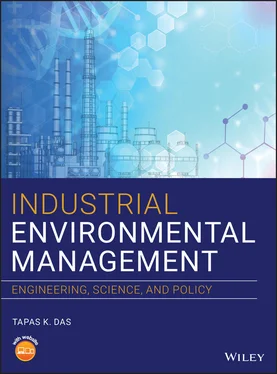
 and
and  .Table 8.2 Four levels of integration in the design to fabrication cycle.Table 8.3 Factors in design for life cycle.Table 8.4 Comparing the two methodologies: Six Sigma and Lean Manufacturing.Table 8.5 Dramatic improvement in the cost of quality as a percentage of sale...
.Table 8.2 Four levels of integration in the design to fabrication cycle.Table 8.3 Factors in design for life cycle.Table 8.4 Comparing the two methodologies: Six Sigma and Lean Manufacturing.Table 8.5 Dramatic improvement in the cost of quality as a percentage of sale...